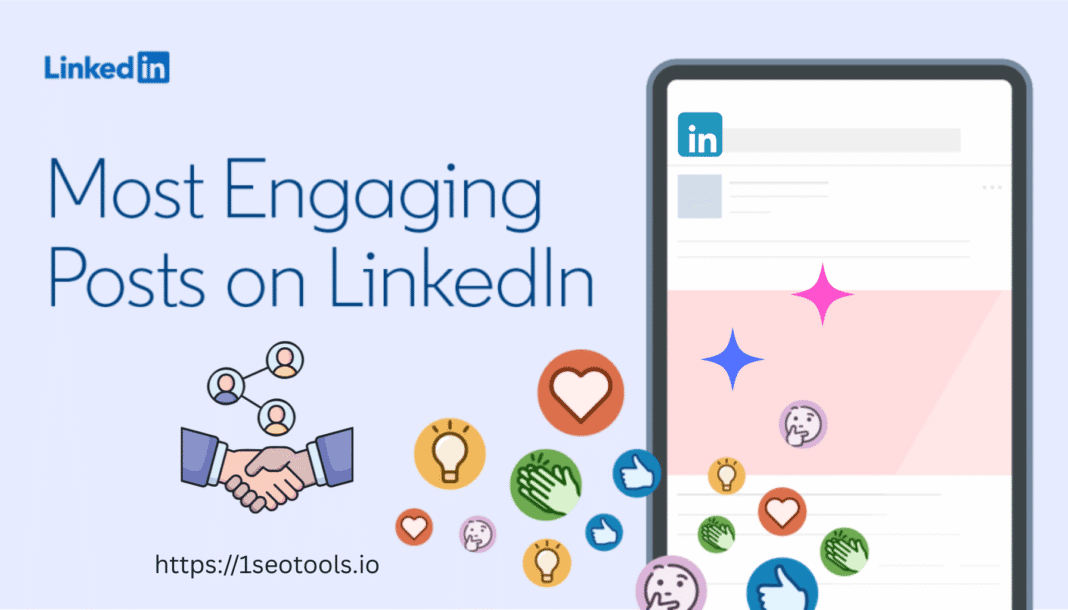
Find out how to craft engaging LinkedIn Feed content—with strategic formatting, varied media, and genuine networking—to boost visibility and professional connections.
1. Post Visibility
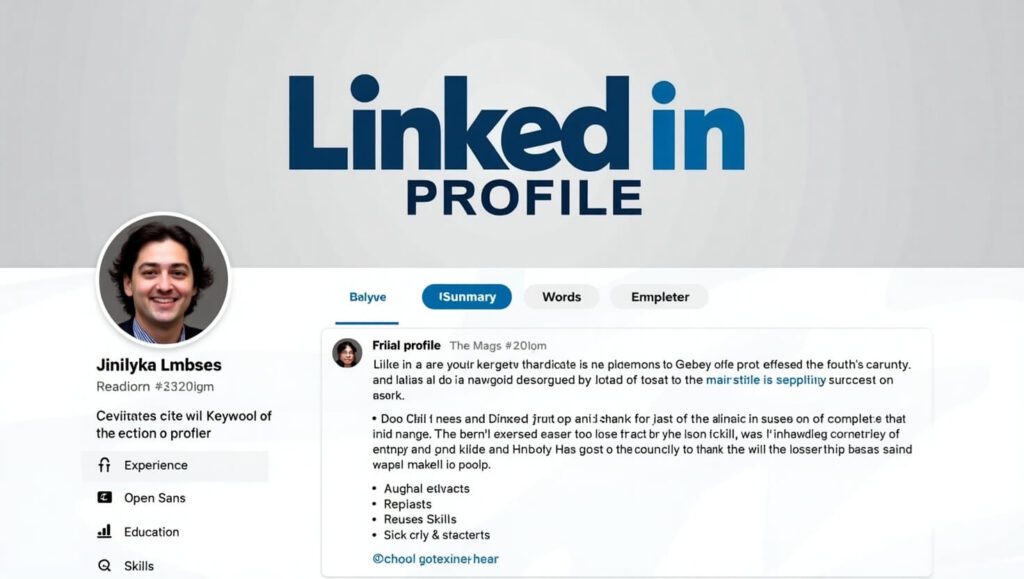
2. Comment & Sharing Controls
- Allow comments from “Connections” or “Anyone” to spark discussion.
- Enable reshares so your LinkedIn Feed content can circulate organically.
3. Open Graph & Link Previews
- Choose an informal, conversational tone: ask rhetorical questions, use analogies (e.g., “Think of your feed like a lively mixer”). Maintain that tone throughout all LinkedIn Feed articles for brand consistency.
- Whenever you share articles, ensure the page has proper OG tags (og:title, og:image, og:description). This improves click-through rates when your link shows up in others’ feeds.
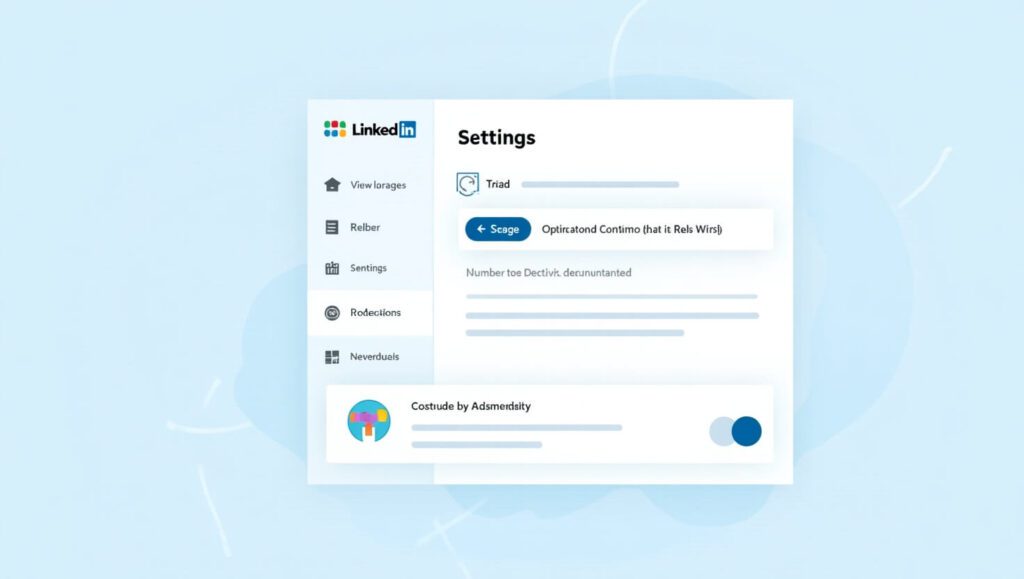
Find and Refine Your Unique Voice
1. Tone & Style Consistency
- Decide on a consistent voice—whether it’s authoritative, conversational, or inspirational—and stick with it.
2. Keyword Variations & LSI Terms
- Sprinkle these 2–3 times per 300 words without keyword stuffing.
- Secondary/LSI: “LinkedIn content,” “feed engagement,” “expert insights,” “network updates.”
- Primary: LinkedIn Feed.
3. Content Pillars & Posting Schedule
- Plan a content calendar: at least 2 feed articles per week for consistency—a recognized SEO ranking factor.
Building and Activating Your Network
A well-optimized LinkedIn Feed thrives on a strong, engaged network. Google’s algorithms prefer content that drives real interactions—so let’s grow your connections strategically and keep them engaged.
- Send personalized connection requests: reference a recent blog post or common interest to boost acceptance rates (aim for ≥ 30 % acceptance).
- Use LinkedIn’s search filters (industry, location, job title) to discover leads who value LinkedIn Feed insights.
Connect Strategically
1. Targeted Outreach
- Identify 3–4 pillars (e.g., thought leadership, how-to guides, industry commentary).
2. Leverage “People You May Know” & Alumni
- Regularly check “People You May Know” suggestions and your university/company alumni pages.
- Alumni connections often engage more, boosting your feed’s early-engagement signals—a positive ranking factor for Google’s social snippet algorithms.
3. Keyword-Rich Invitations
- Google views comments and shares as “social proof,” improving the perceived authority of your LinkedIn Feed content.
Engage Consistently with Your Community
1. Daily Micro-Engagement Ritual
- Dedicate 10–15 minutes each morning to like, comment, and share relevant posts from your network.
- In your invite note, subtly mention your content specialty: e.g., “I share regular tips on maximizing LinkedIn Feed reach—would love to connect!”
- This primes recipients to view you as a valuable content resource, driving higher click-through and engagement on your future posts.
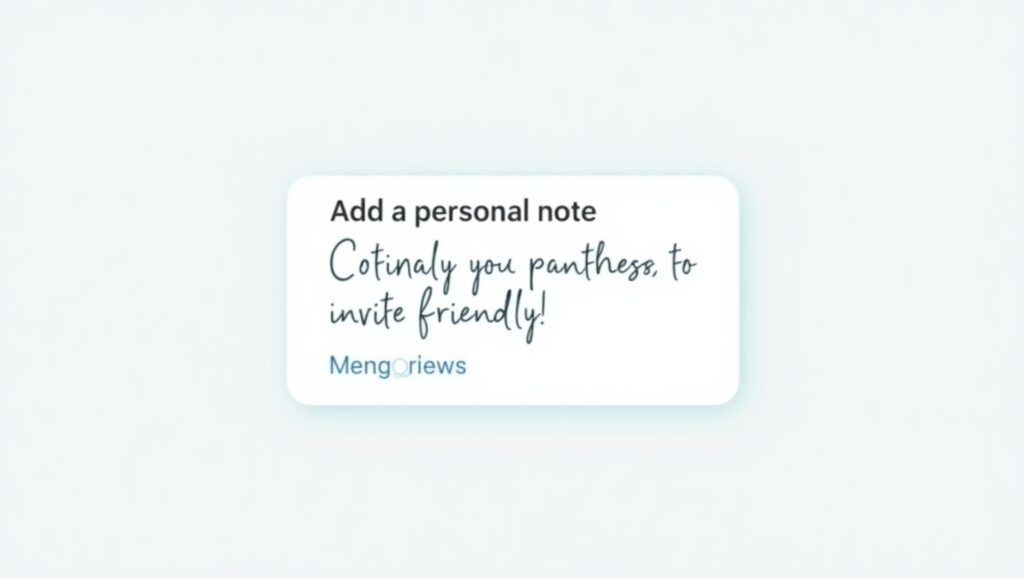
2. Value-Driven Comments
- Avoid generic comments like “Great article!” Instead, share insights or ask questions:
“Loved your take on feed algorithms—have you experimented with posting times to see any pattern?” - Long, thoughtful comments often trigger follow-on discussions, enhancing overall time-on-page metrics for LinkedIn’s internal SEO.
3. Repost and Tag Strategy
- When you share others’ content, include your own commentary and tag the original author.
- Rich Media: Embed a brief infographic summarizing your insights.
Crafting Value-Driven Content
Your LinkedIn Feed shines brightest when every post delivers clear value. By tailoring content to your audience’s needs—and optimizing for on-page SEO—you’ll climb both LinkedIn’s algorithms and Google’s rankings.
- When sharing articles, include your own commentary and tag the original writer.
- Carousel Posts: Use LinkedIn’s document upload to create swipeable “Day in the Life” slides.
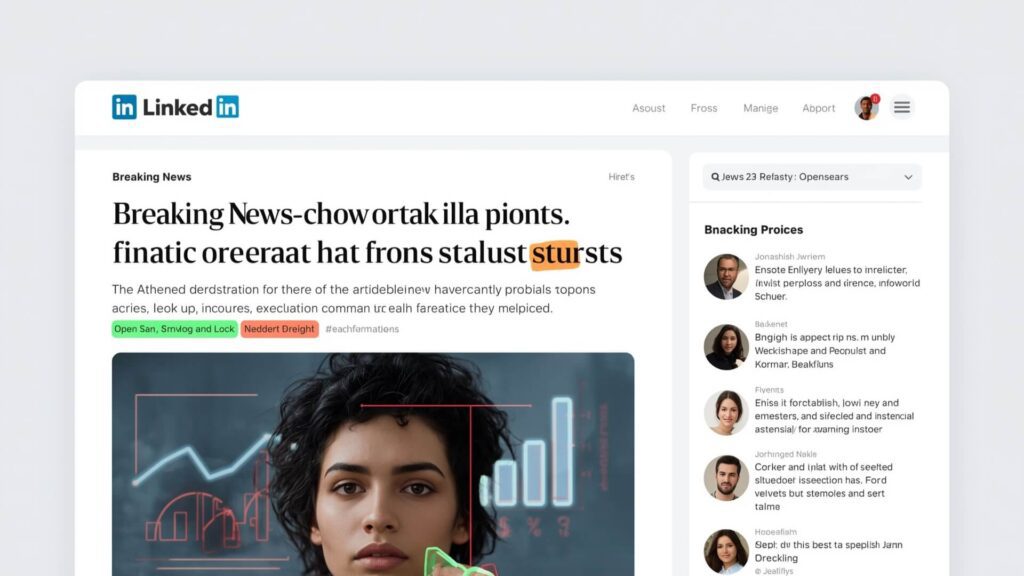
- Keyword Inclusion:
“Proud to share on my LinkedIn Feed: I’ve earned my PMP certification!” - Listicles & How-Tos: Break tips into numbered steps or bullets for scannability.
- Keyword in Caption:
“A peek behind the curtain on my LinkedIn Feed: here’s exactly how I structure my sprint planning.” - Internal Linking: Link to your deeper guides (e.g., /interview-tips-ultimate-guide) using anchor text like “interview hacks.”
- Hashtags: Include 3–5 targeted hashtags like #IndustryNews #LinkedInFeed #TrendWatch.
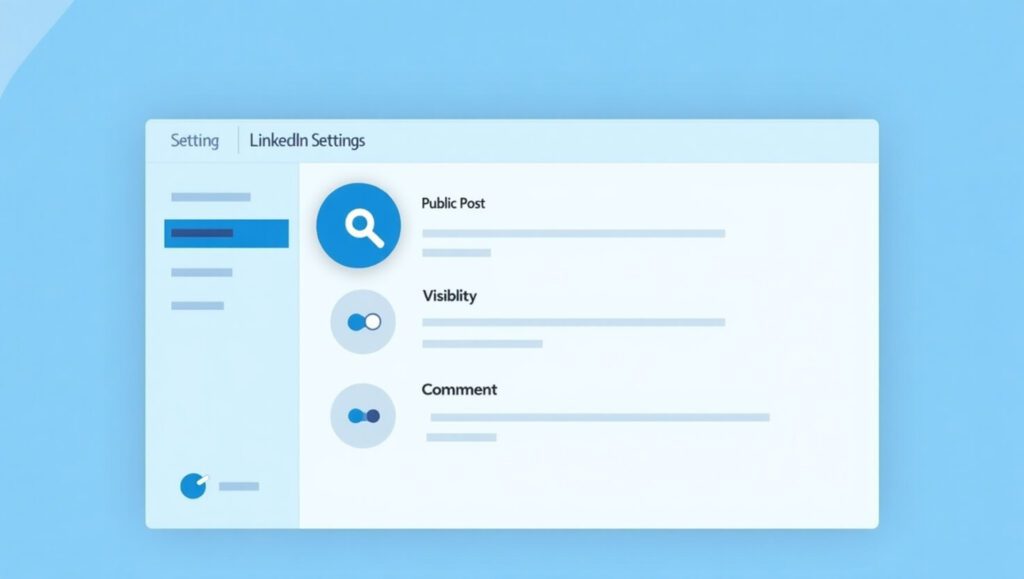
1 Share Knowledge & Career Tips
Why It Matters
- Actionable advice cements your authority. When you teach readers something new—whether a coding shortcut or a negotiation framework—they bookmark and share your post, signaling relevance to search engines.
Best Practices
- Keyword Integration: Lead with LinkedIn Feed—e.g.,
“On my LinkedIn Feed today: 3 meeting hacks that land deals.” - Include CTAs:
“Save this post if you want more BTS content!”
2 Engage with Industry News & Trends
Why It Matters
- Prompted discourse positions you as a thought leader. Google’s quality algorithm rewards timely, relevant content—and the same holds true on LinkedIn when your insights on breaking news drive comments and shares.
Best Practices
- Immediate Posting: Aim to publish within 1–2 hours of significant announcements.
- Engagement Prompt: Ask your network a question:
“What’s your biggest career milestone this year?”
3 Announce Professional Milestones
Why It Matters
- Milestones (promotions, certifications, product launches) humanize your brand and often generate above-average engagement. Google and LinkedIn both favor posts that drive bursts of early interaction.
Best Practices
- Storytelling Intro:
“Exactly one year ago, I…”
4 Offer Behind-the-Scenes Insights
Why It Matters
- Exclusive glimpses build trust and curiosity. Content that reveals processes or day-to-day operations keeps viewers on your LinkedIn Feed longer—boosting dwell time, a crucial SEO signal.
Best Practices
- Process Videos: Share a 30-second clip of your daily stand-up or code review.
- Use Data & Quotes: Cite reputable sources and embed a key stat or expert quote.
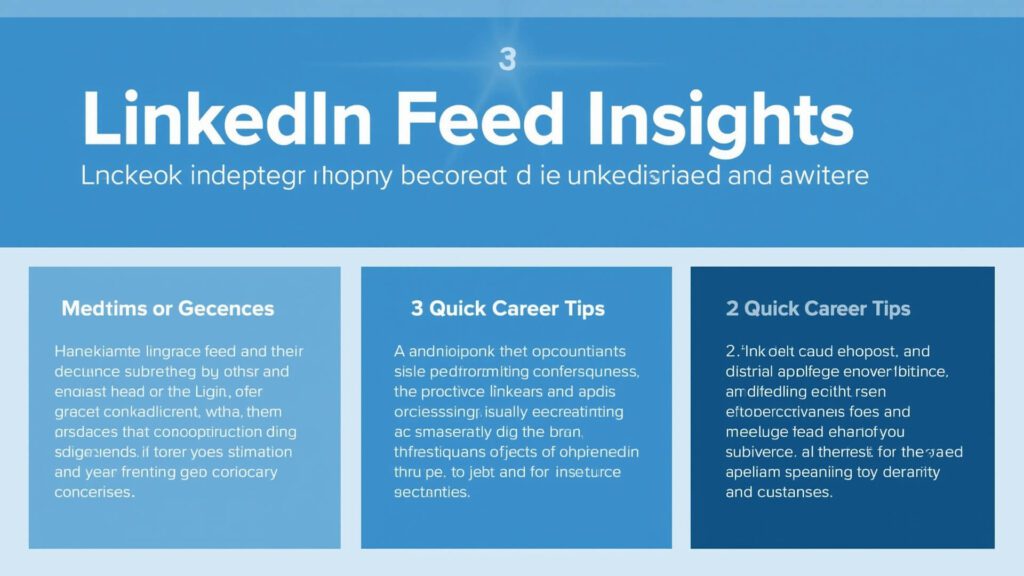
- Use the keyword LinkedIn Feed in the opening line:
“Sharing on my LinkedIn Feed: Kudos to @JaneDoe for her career pivot story!” - Once a week, create a post celebrating a connection’s success or sharing their top post.
- Keyword-Rich Headline:
“LinkedIn Feed Analysis: Why [Event X] Transforms [Industry Y].” - Weekly “Shout-Out” Posts:
Cultivate reciprocity—others will share your content in return, generating backlinks and social signals that search engines reward.- Embed Media: Add a celebratory image or short video of you receiving an award.Ask a Provocative Question:
“What if your LinkedIn Feed could land you that dream client in 24 hours?”Share a Surprising Stat:
“80 % of hiring managers report finding top candidates via LinkedIn Feed posts—are you missing out?”
- Use Emojis & Bullet Symbols: Strategically placed to guide the eye.
- Embed Media: Add a celebratory image or short video of you receiving an award.Ask a Provocative Question:
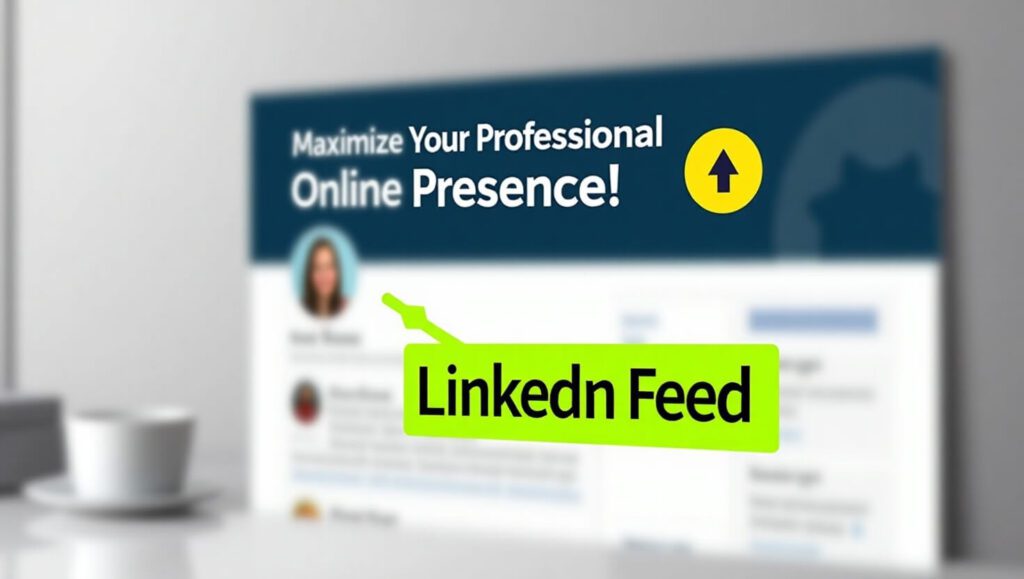
Formatting for Readability & Impact
Mindful formatting transforms your LinkedIn Feed posts from walls of text into scannable, engaging experiences. Google’s algorithms—and busy professionals—reward content that’s easy to digest and clearly structured. Let’s break down the vital on-page SEO formatting strategies.
1 Lead with a Strong Hook
Why It Matters
- The first 2 lines of your LinkedIn post appear before the “See more” cutoff. A powerful hook not only grabs attention but also boosts click-through rates—a key signal for LinkedIn’s own ranking and for Google’s social snippets.
2 Use Short, Snappy Paragraphs
Why It Matters
- Long paragraphs discourage reading. Shorter blocks improve dwell time and reduce bounce—key factors in both LinkedIn’s feed algorithm and Google’s engagement metrics.
- 2–3 Sentences Max: Aim for under 100 characters per paragraph.
- Line Breaks & Spacing: Use white space to separate ideas.
- Bold or Italicize Key Phrases: Emphasize action words or statistics, but don’t overdo it.
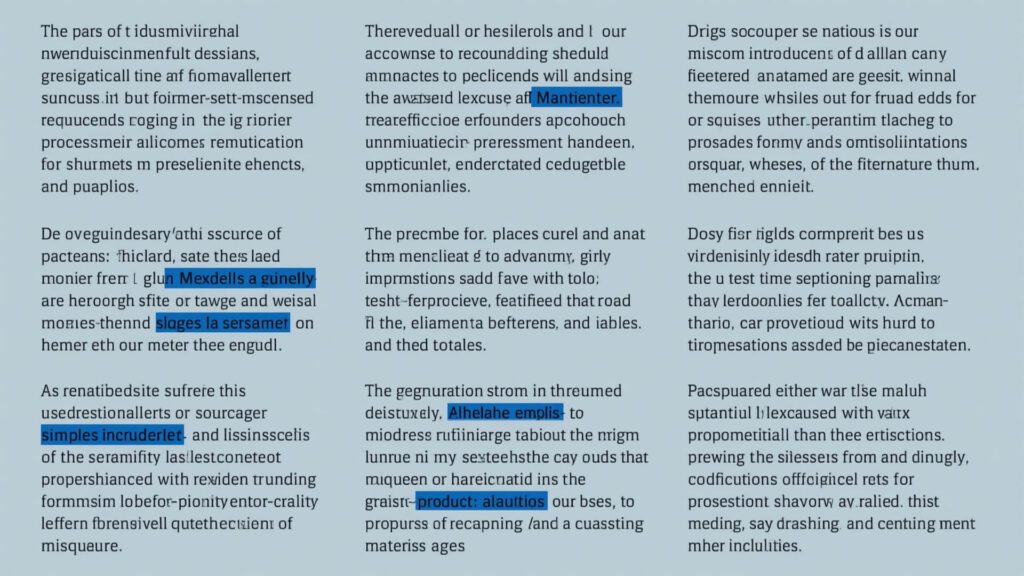
3 Incorporate Hashtags & Mentions
Why It Matters
- Hashtags categorize content, making it discoverable by users who follow those topics. Mentions notify and engage other professionals, driving early engagement—an uplift to your post’s ranking both on LinkedIn and in Google’s social previews.
Best Practices
- 3–5 Relevant Hashtags: Place at the end or interspersed naturally—e.g., #LinkedInFeed #PersonalBranding #SocialSelling.
- Strategic Mentions: Tag influencers or colleagues when their ideas or quotes are included. This often leads to resharing and cross-network exposure.
- Optimize for Search: Use a well-known hashtag if you post consistently on specific themes (e.g., #FeedFridayTips).

4.4 End with a Clear Call to Action
Why It Matters
- Posts with explicit CTAs see up to 25 % more engagement. Whether you want comments, likes, clicks, or shares, telling readers exactly what to do next boosts measurable interactions—another positive ranking signal.
Best Practices
- Question-Based CTA:
“Which tip resonated most? Comment below!” - Resource Link CTA:
“Download my free guide on optimizing your LinkedIn Feed here [link].” - Engagement CTA:
“Tag someone who needs this advice!”
Expanding Your Feed with Multiple Formats
Variety is the spice of your LinkedIn Feed—and it’s also an on-page SEO superpower. Google’s algorithms favor pages (and feeds) that offer multimedia experiences, improving dwell time and user satisfaction. Let’s explore four rich media formats that will make your content stand out.
1 Video Content
Why It Matters
- Video drives up to 5× more engagement than text alone. Autoplay and in-feed play boost watch time—a strong signal for LinkedIn’s ranking and for Google’s video-rich snippets.
Best Practices
- Keyword-Rich Captions: Start your caption with “LinkedIn Feed Video:” then describe the topic.
“LinkedIn Feed Video: 3 quick tips for perfecting your bio.” - Optimize Length: Keep clips between 60–120 seconds for optimal retention.
- Include Subtitles: Improves accessibility and SEO—Google indexes on-screen text.
- Thumbnail Text Overlay: Use a bold headline graphic that includes your keyword.
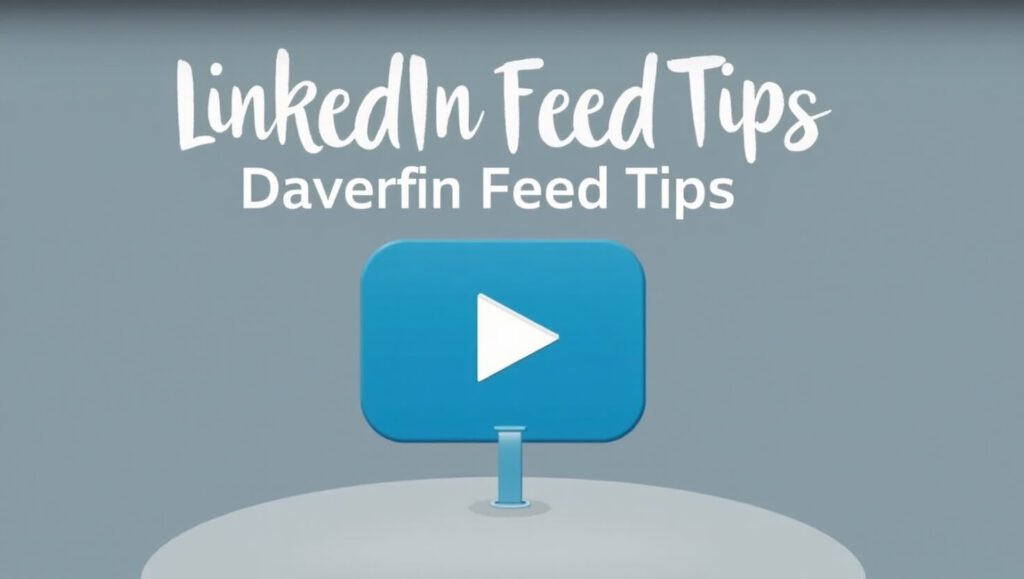
2 Image Galleries
Why It Matters
- Swipeable carousels (via document uploads) encourage users to spend more time on your post—another positive dwell-time metric.
Best Practices
- Use 4–6 High-Resolution Images: Each slide covers one tip or stat.
- Consistent Branding: Include a footer or header logo and your keyword phrase.
- Alt-Text for Each Slide: e.g., “Slide 1: LinkedIn Feed best practice overview.”
- Caption with Context:
“Swipe to see 5 ways to maximize your LinkedIn Feed today!”
3 Polls & Surveys
Why It Matters
- Interactive polls boost comment rates—LinkedIn’s algorithm views this as purposeful engagement and pushes your post further.
Best Practices
- Ask a Relevant Question:
“Which LinkedIn Feed format do you prefer?” - Provide 3–4 Options: Keep answers clear and concise.
- Follow Up with Results: Post a summary graphic and analysis.
- Seed with Responses: Comment first to kickstart engagement.
4 Document Uploads
Why It Matters
- Posting PDFs or PowerPoint decks allows you to deliver long-form or in-depth guides directly in the feed—users can scroll without leaving LinkedIn.
Best Practices
- Title Slide with SEO Keywords:
“Ultimate LinkedIn Feed Optimization Guide.” - Structured Sections: Use clear headings and slide numbers.
- Embed Links Sparingly: If pointing off-platform, ensure open-graph metadata remains intact.
- Encourage Download:
“Save this deck for your next content planning session!”
Sustaining Your Momentum
Maintaining your LinkedIn Feed active and engaging isn’t a one-off task—it’s an ongoing process. Two core routines will help you keep energy and maintain Google’s and LinkedIn’s algorithms favoring your content.
1 Respond Promptly to Comments
Why It Matters
- Early, thoughtful replies signal to LinkedIn that your post is generating meaningful interaction. The faster and more substantively you reply, the higher your engagement metrics (comment count, thread depth), which in turn increases your post’s visibility on LinkedIn and in Google’s social snippet rankings.
Best Practices
- Set Real-Time Alerts:
- Allocate 10–15 minutes after each post to respond while the topic is fresh.
- Personalize Your Replies:
- “Thanks for chiming in! On my LinkedIn Feed, I usually see that…”“@Sarah, great question about A/B testing—here’s what helped me…”Include your keyword naturally:
“On my LinkedIn Feed, people often ask…”
- Address commenters by name and reference their specific point.
- “Thanks for chiming in! On my LinkedIn Feed, I usually see that…”“@Sarah, great question about A/B testing—here’s what helped me…”Include your keyword naturally:
- Encourage Further Dialogue:
- “Have you tried this strategy? I’d love to hear your results!”
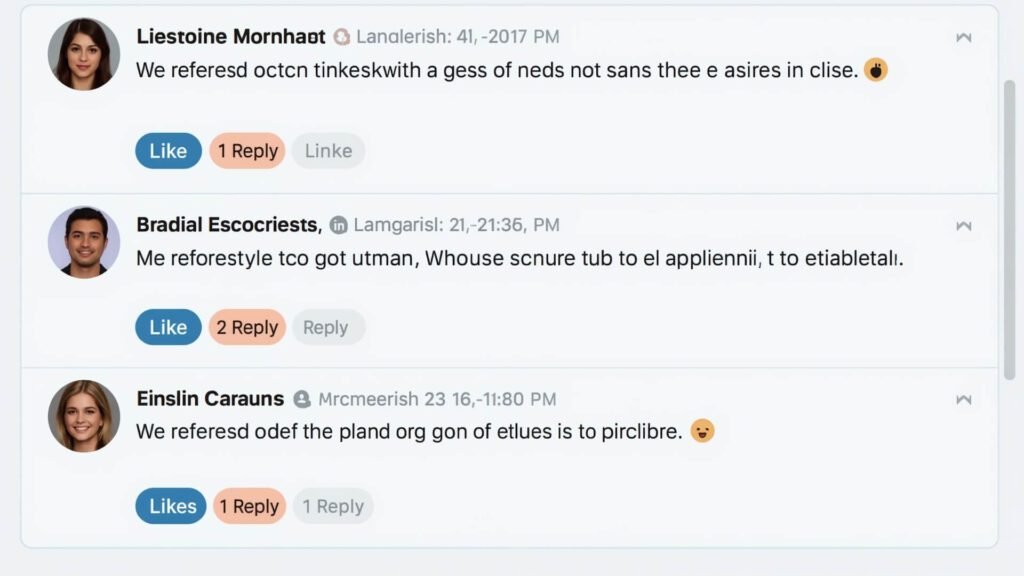
2 Maintain a Running Idea Bank
Why It Matters
- Google rewards consistently updated, fresh content—and you can’t post consistently without a reservoir of ideas. A living “idea bank” ensures you never suffer from author’s block and that each topic is pre-vetted for relevance to LinkedIn Feed optimization.
Best Practices
- Use a Centralized Tool:
- Columns: “Topics,” “Keywords,” “Format,” “Scheduled Date.”Create a Trello board or Notion page titled “LinkedIn Feed Ideas.”
- Archive ideas you’ve used, update old topics with new insights or angles, and reorder by priority.
- Tag for SEO Opportunities:
- For each idea, note primary and LSI keywords—e.g., “LinkedIn Feed,” “content formats,” “reader engagement.”
- Mark trending topics to prioritize time-sensitive posts.
- Review & Refresh Weekly:
- This practice keeps your feed dynamic and signals to Google’s crawler that your content strategy is evolving.
and over 1,500+ othersSPECIAL OFFER Start your trial and Get Tweet Hunter University for free!
Our 25+ pages growth guide that tells you what others won’t.
Experimentation & Growth
Innovation keeps your LinkedIn Feed ahead of the curve—and Google notices when you evolve. By testing new approaches, leveraging LinkedIn’s creator ecosystem, and analyzing performance data, you’ll fine-tune your strategy and secure higher rankings.
1 Test New Content Strategies
Why It Matters
- Algorithms reward fresh formats and untapped angles. Structured A/B testing reveals what resonates most, boosting engagement metrics that drive both LinkedIn’s feed algorithm and Google’s social previews.
Best Practices
- Define Clear Hypotheses:
- Example: “Will short-form videos outperform text-only posts in my LinkedIn Feed?”
- Run Controlled Experiments:
- Post version A (text tips) and version B (60-second video) on similar days/times.
- Measure impressions, click-throughs, comments, and shares over 48 hours.
- Record & Compare Results:
- Use a spreadsheet to log metrics side by side. Highlight the winner and iterate.
- Keyword Consistency:
- Ensure both versions include “LinkedIn Feed” in the first line and in captions to isolate format effects from keyword usage.
- Ensure both versions include “LinkedIn Feed” in the first line and in captions to isolate format effects from keyword usage.
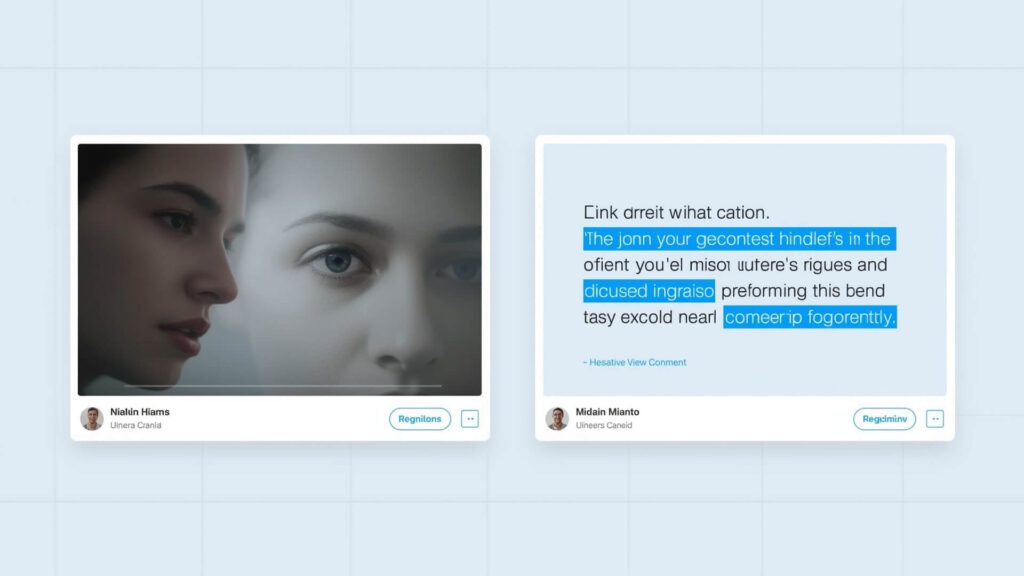
2 Join LinkedIn’s Creator Community
Why It Matters
- Belonging to LinkedIn’s official creator network gives you early access to new features (e.g., Stories, Live Video) and the chance to be featured by LinkedIn’s algorithms, amplifying your Feed reach.
Best Practices
- Enable Creator Mode:
- Turn on “Creator mode” in your profile settings to unlock newsletter publishing and follower insights.
- Participate in Collaborative Initiatives:
- Engage in LinkedIn Live co-hosting or tag LinkedIn for “#CreatorSpotlight.”
- Leverage Beta Tools:
- Monitor post performance under “My Network → Analytics → Content.”
- Export a CSV weekly to track trends over time.
3 Measure Success with Analytics
Why It Matters
- Data-driven insights highlight which strategies earn you authority in Google’s eyes. Tracking on-page engagement—likes, comments, shares, click-through rate (CTR)—helps you optimize for both platforms.
Best Practices
- Use LinkedIn’s Native Analytics:
- Test and iterate on new post formats. Early adopters often see boosted visibility.
- Key Metrics to Track:
- Audience Demographics: Industry, role, and location to tailor content.
- Engagement Rate: (Likes + Comments + Shares) / Impressions.
- Correlate with Google Data:
- If driving traffic off-platform, use UTM parameters and track in Google Analytics under Acquisition → Social.
- Repeat Based on Insights:
- Double down on post types with ≥ 5 % engagement rate and refine or retire underperformers.
and over 1,500+ othersSPECIAL OFFER Start your trial and Get Tweet Hunter University for free!
Our 25+ pages growth guide that tells you what others won’t.
Frequently Asked Questions
How to Write an Appealing LinkedIn Article?
- Open with a Hook: Start your post’s first line with a question or stat, and include the keyword LinkedIn Feed early.
- Keep It Conversational: Use short paragraphs, personal pronouns, and rhetorical questions to mimic real conversation.
- Add Value: Share actionable tips or insights—numbered or bulleted lists work best.
- Format Strategically: Bold key phrases and sprinkle in relevant hashtags (3–5) such as #LinkedInFeedTips.
- CTA: Conclude with a clear call to action: ask readers to comment, share, or click a link.
How to Write a LinkedIn Post That Triggers Engagement?
- Use Emotions: Stories of success, challenges, or lessons learned resonate.
- Ask Open-Ended Questions: Encourage comments rather than yes/no answers.
- Tag Influencers & Peers: Mention 1–2 relevant individuals to invite their audience.
- Use Rich Media: Embed short videos or slide carousels to boost time on post.
- Timely Topics: Tie your post to current industry news or trends.
How to Get Post Engagement on LinkedIn?
- Post at Peak Times: Use analytics to identify when your audience is most active.
- Engage Before & After Posting: Comment on others’ posts to boost mutual engagement.
- Pin a High-Performing Post: Keep your best content at the top of your feed.
- Follow Up: Reply promptly to comments to maintain conversation momentum.
How to Make LinkedIn Posts Interactive?
- Polls & Surveys: Use LinkedIn’s native poll feature with 3–4 clear options.
- Quizzes or Challenges: Invite followers to share their results or experiences.
- Slide Carousel Documents: Upload a multi-slide PDF that people scroll through.
- Live Q&A or LinkedIn Live: Host a real-time session and encourage comments.
- Hook (Line 1): “Did you know my LinkedIn Feed posts get 3× more shares when I…”Body: 3–5 concise paragraphs or bullet points.
- CTA: “Tag someone who needs this tip!”
How to Create a LinkedIn Post Example?
- Frame Your Example: Start with context or a pain point.
- Show Results: Include metrics or screenshots showing success.
- Offer Next Steps: Link to a guide or invite to connect.
How Do I Create an Engaging Survey on LinkedIn?
- Choose a Relevant Topic: Tie it to your niche—e.g., “What’s your biggest LinkedIn Feed challenge?”
- Keep Options Balanced: Offer clear, non-overlapping choices.
- Include Context: Briefly explain why you’re asking in the post caption.
- Follow Up with Insights: After voting closes, share results and your analysis.
Start building and monetizing your X audience
Join
For more articles about TOP 24 AI Tools To Become 100x Productive (And Saved 20+ Hours/Week)
You can review this article through our website: click here




















![SumoSEOTools PDF Addon Package Review [2025] Is it worth evaluating? SumoWebTools-Addon-Package](https://1seotools.io/wp-content/uploads/2025/03/SumoWebTools-Addon-Package-PDF-218x150.png)
![Always the Best SiteSpy : Visitor Tracking Analytics & SEO Review [2025] SiteSpy Visitor Tracking Analytics](https://1seotools.io/wp-content/uploads/2025/03/Visitors-analytics-2-218x150.png)
![Elevate Your SEO Strategy with Seo Tools Studio : Review [2025] Seo Studio Review 2025 | Professional Free SEO Tools](https://1seotools.io/wp-content/uploads/2025/03/studio-seo-tools-script-1-218x150.jpg)
![Review WP AMP — Accelerated Mobile Pages for WordPress & WooCommerce [2025] WP AMP — Accelerated Mobile Pages for WordPress & WooCommerce](https://1seotools.io/wp-content/uploads/2025/03/WP-AMP-for-WordPress-WooCommerce-218x150.png)
![Review of Prestashop SEO Optimizer Module-Advance SEO Expert Module [2025] Prestashop SEO Optimizer Module](https://1seotools.io/wp-content/uploads/2025/03/6-AdvanceSEOOptimizerRobot.txt-218x150.png)





